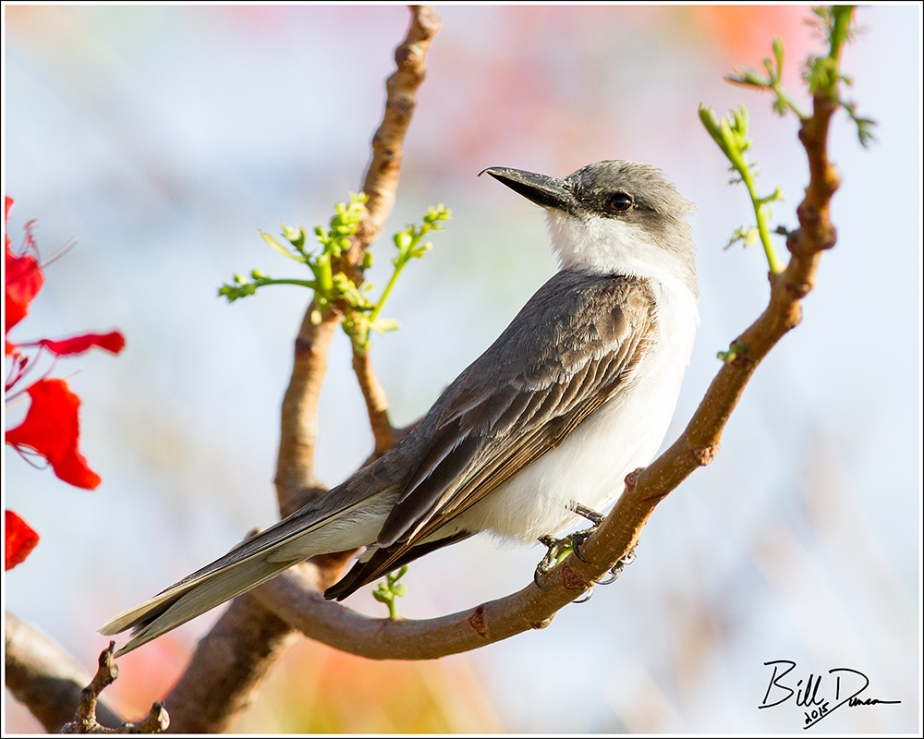
My third and final day to myself in southwestern Puerto Rico would be quite memorable. I placed myself within the center of the Elfin Woods of the Maricao State Forest. I arrived at ~ 06:30 and did not leave until ~19:30. The AM weather was spectacular, with cool temps and some steady breeze and partly cloudy skies. I stayed the entire day in a little recreation/biological station that was about 1/4 of a mile long. It contained nice bathrooms and covered picnic tables. This was a good thing because the rains came onto the mountain at about 13:00 and stayed mostly through the time that I left.

On mountain road 120, look for this sign. This is one of only a likely two spots on earth to have a good chance of seeing the Elfin Woods Warbler, one of the endemic bird species to the island and one I had little hope of finding.

There were a couple of those old CCC signs here as well.

I had read bits and pieces that there were trail heads here and others scattered throughout this small forest preserve, but I could find no signs of those anywhere. Ultimately, I doubt I missed much. The ~1/4 of a mile I had was split mostly between the birds and myself. All it took was some patience, or, lots of patience as the birds came and went into the thick vegetation that rose or dropped steeply on one respective side of the road or the other.

Many species of tropical hummingbirds are known to occur within a narrow range of altitude. The Antillean Mango can be found throughout the rainforest habitats of Puerto Rico, up to the highest peaks of the island.

The Puerto Rican Bullfinch is not a finch at all, but a Cardinal. It has a song that is quite reminiscent of our Northern Cardinal. I found these guys, like so many of the birds on the island, to be a bit shy and tricky to get a clear view of.

The Puerto Rican Tanager is another endemic bird of the island. The cloudy skies made photography quite challenging.

After this Pearly-eyed Thrasher had its fill of the water-apple, I made sure I got my two or three as well… 😉

While this stretch of mountains is a dream for the botanist (more than 250 species of trees), several of these are imports from other tropical locations. Similar to the El Yunque forest on the eastern side of the island, several exotic tree species have been introduced here from Australia. While several of these species seem to have a small or even neutral effect on the native ecosystems, some have become quite problematic, like these invasive eucalyptus.

The Todys were here as well! And I was in for quite a surprise.

One of the several highlights of the day was finding a PR Tody nest cavity in the side of a mud bank. These guys are in the same family as the Kingfishers, and build a similar nest cavity. I happened to be walking by as a bird hopped to the entrance and darted within feet from my face while giving me a terrible scolding. I backed off a bit, hoping it would come back for a great photo opportunity. After 20-30 minutes no birds came, so I pushed on, not wanting to be the reason a youngster was not getting a meal. I would walk by the cavity a few times over the course of the day, but never had any luck. I don’t think they spend a lot of time within sight of the nest cavity, it being a quick in and out operation.

Although I was able to find a couple of the PR Woodpeckers the day prior at Cabo Rojo, I was not able to get any photographs. Thankfully a group came through the area and I managed a couple of mediocre shots. Spectacular birds, as are most Woodpeckers.

Finally, the quintessential bird for this most Tolkienesque of forests. The Elfin Wood Warbler. I was able to watch a small group of these quite mobile darts move in and out of the dense, roadside wall of the forest canopy. Only described by science in 1972, it has been estimated there may be as few as 1800 of these birds left on the island.

Human modification and destruction of these mountain forests are having major detrimental effects on these habitats throughout the tropics. In Puerto Rico this habitat is being lost to communication arrays and the roads to service them – one of the costs of global connectivity. I was appalled by some of the views I had of antennas being stacked as thick as trees on some of the mountain tops in this Forest.
Coffee is king here and some of the oldest and largest coffee farms are found within Maricao. I was able to speak with several folks on the island who worked as, or were part of families associated with farming coffee. Not one of them practiced or had any plans to practice shade-grown, bird-friendly coffee. Although it certainly is not the perfect answer in protecting these endemic mountain species, purchasing shade-grown coffee is an important practice in enabling conservation in these areas.
As the light waned and the rains began to lighten, I sat listening to the coqui frogs and other pieces of the night symphony begin their warm up. Just when I thought it couldn’t get better, I heard what I had hoped to hear – the Puerto Rican Screech Owl. This bird gave me a total of 17 of a possible 18 endemic bird forms for the enchanted isle. The only miss was the Puerto Rican Parrot, which is only found in small patches of El Yunque to the east. I can only hope that these birds can continue existing in their present forms long after I have not.
Thanks for visiting…
OZB









































